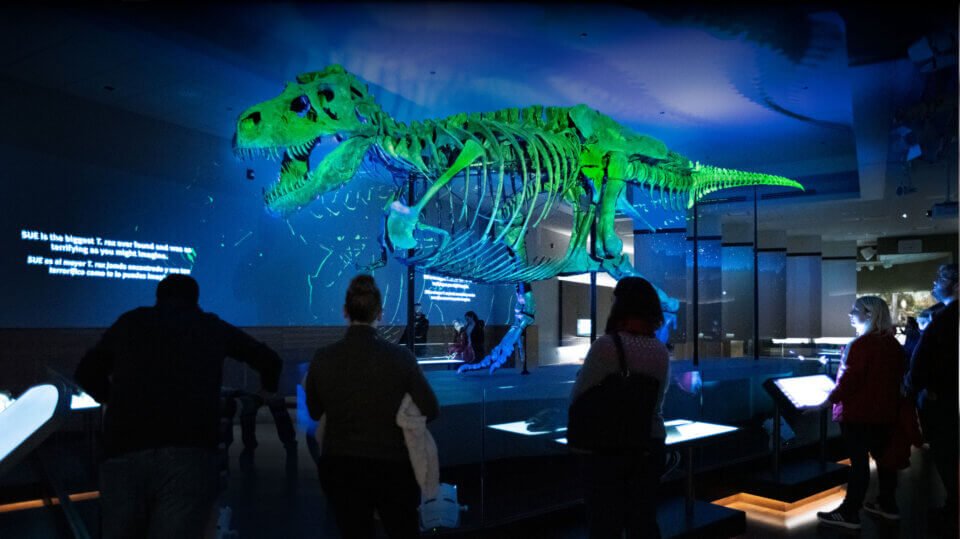ST. LOUIS, MO – April 25, 2024 SUE: The T. rex Experience Offers Immersive, Sensory Exploration of Life in the Cretaceous Period The Saint Louis Science Center will welcome SUE: The T. rex Experience from June into September. SUE is the most complete, best-preserved Tyrannosaurus rex specimen ever discovered, and this special exhibition features the… Continue reading
Vote for the Saint Louis Science Center!
The Saint Louis Science Center has been recognized as one of the top science centers and free museums in the United States of America! We’re honored that Newsweek magazine has nominated our institution for their Readers’ Choice Award in the Best Free Museum category. We hope that you will vote for us! Voting has… Continue reading
Impala Skull Collected from Southern Africa
The Impala is an antelope native to the savannas and woodlands of eastern and southern Africa. Did you know that impalas bark? When a predator is sensed, an impala will bark to warn the rest of the herd. This causes the entire herd to flee, making them very difficult to catch. Impalas are very fast… Continue reading
Trilobite – Late Cambrian period
Trilobites are an extinct group of marine arthropods, invertebrate animals with an exoskeleton, segmented body, and multiple paired legs. Trilobites were one of the most successful of all early animals, existing in the oceans for nearly 300 million years. This particular fossil is a trilobite which lived in the area of Newfoundland and Nova Scotia,… Continue reading
Collections – House Mouse | Collected from California
Many people know how much of a nuisance house mice can be, but did you know that they have some interesting abilities? A house mouse can hear in both the human range (audible to humans) and the ultrasonic range (not audible to humans). They are also good jumpers, able to jump a foot straight up… Continue reading
Collections – Leech Jar Staffordshire, England, 1850
Hard to believe that leeches were kept in this beautiful jar! In the mid-19th century, medical practitioners used these blood-sucking worms as a cure-all, treating everything from boils to headaches. Today doctors continue to employ leeches, though not nearly as often! For example, leeches can be used to prevent tissue death by kick-starting blood flow… Continue reading
Collections – Porcupinefish | Collected from Gulf of Mexico
The slow-moving porcupinefish has three defense mechanisms to prevent predators from enjoying a tasty meal. The fish can swallow water or air and inflate to about twice its size. It also has a set of sharp spines that stick outward when inflated. Finally, some species of porcupinefish are poisonous, with a neurotoxin at least 1,200… Continue reading
Collections – Model Airplane | German Fokker Dr.1 Triplane
The Fokker Dr.1 Triplane was a German fighter plane made famous during World War I by Germany’s leading flying ace, the “Red Baron.” Baron Manfred von Richthofen scored 80 air combat victories, and was a national hero in Germany. Although not as fast as other fighters, the Fokker Triplane had better rate of climb and… Continue reading
Collections – Shark Jaw | Collected from Baja California, Mexico
Sharks never stop growing new teeth; they have rows of backup teeth like those visible here in the jaw of this Silvertip Shark. An aggressive shark, the Silvertip is found around the coral reefs and offshore islands of the Indian and Pacific Oceans. They can grow between 6 and 8 feet long, and up to… Continue reading
Collections – Galvanometer | Massachusetts, ca. 1930s
A galvanometer is an instrument used to indicate the presence, direction, or strength of an electric current. In 1820, scientists found the first connection between electricity and magnetism when they discovered that electric currents create magnetic fields. This particular galvanometer is an astatic galvanometer, which has two needles with opposite polarities that cancels out the… Continue reading








